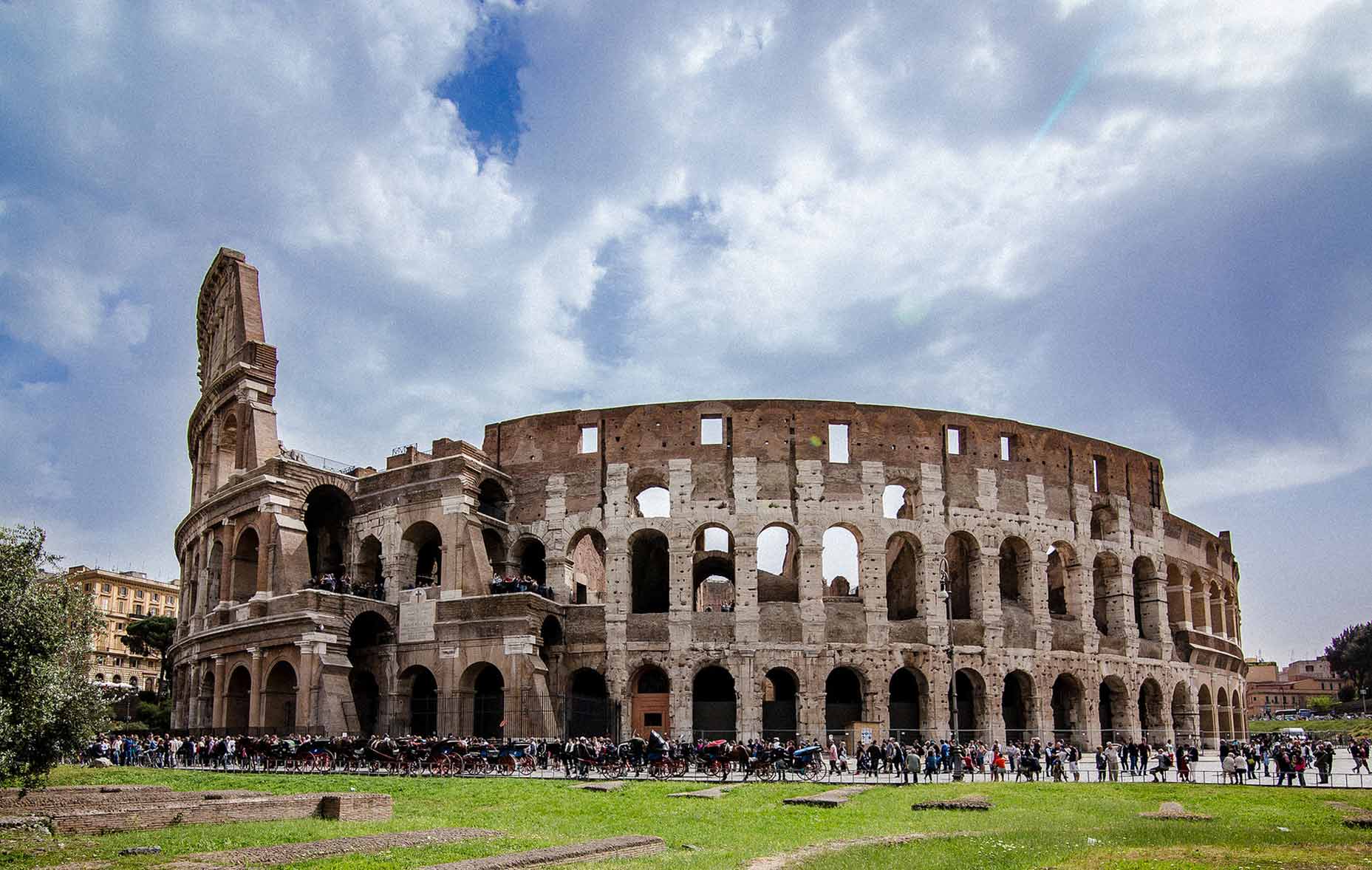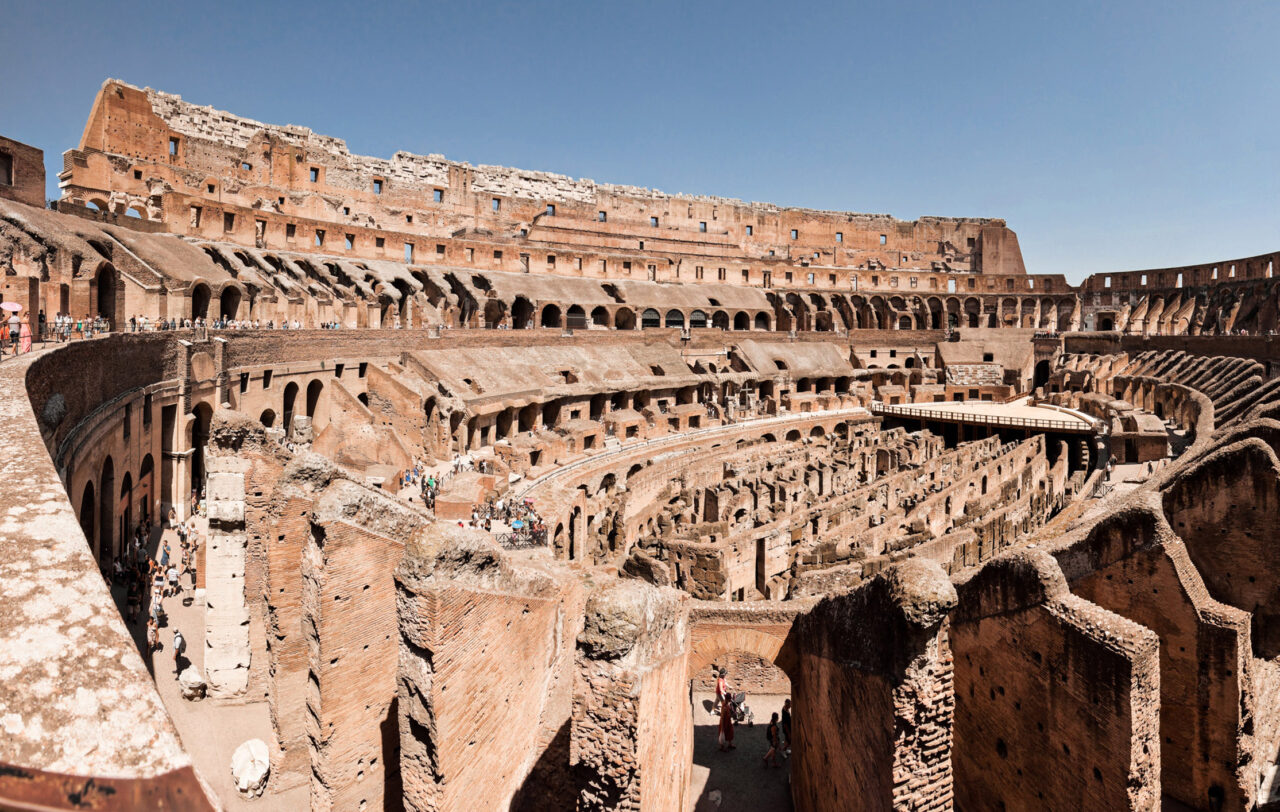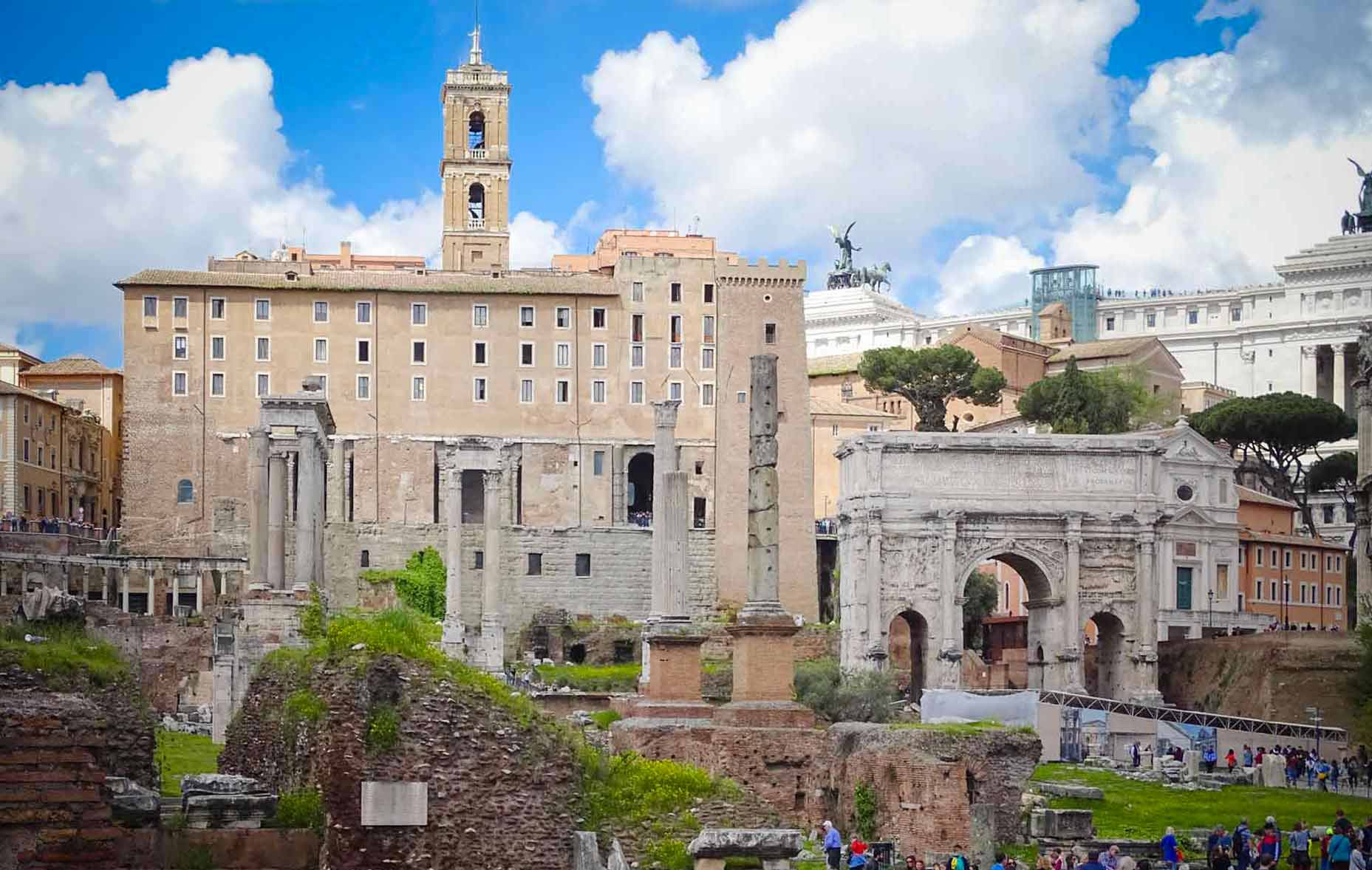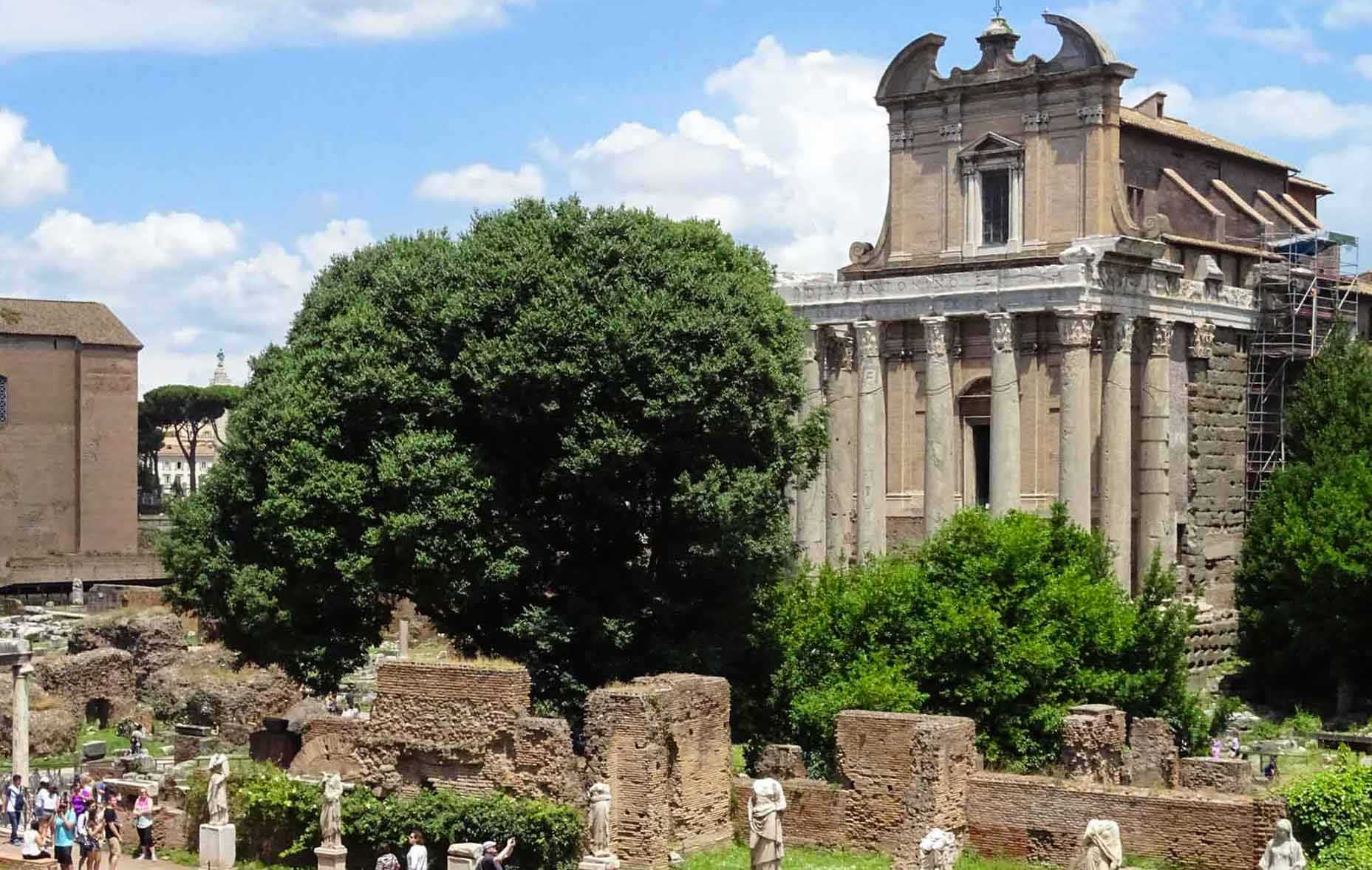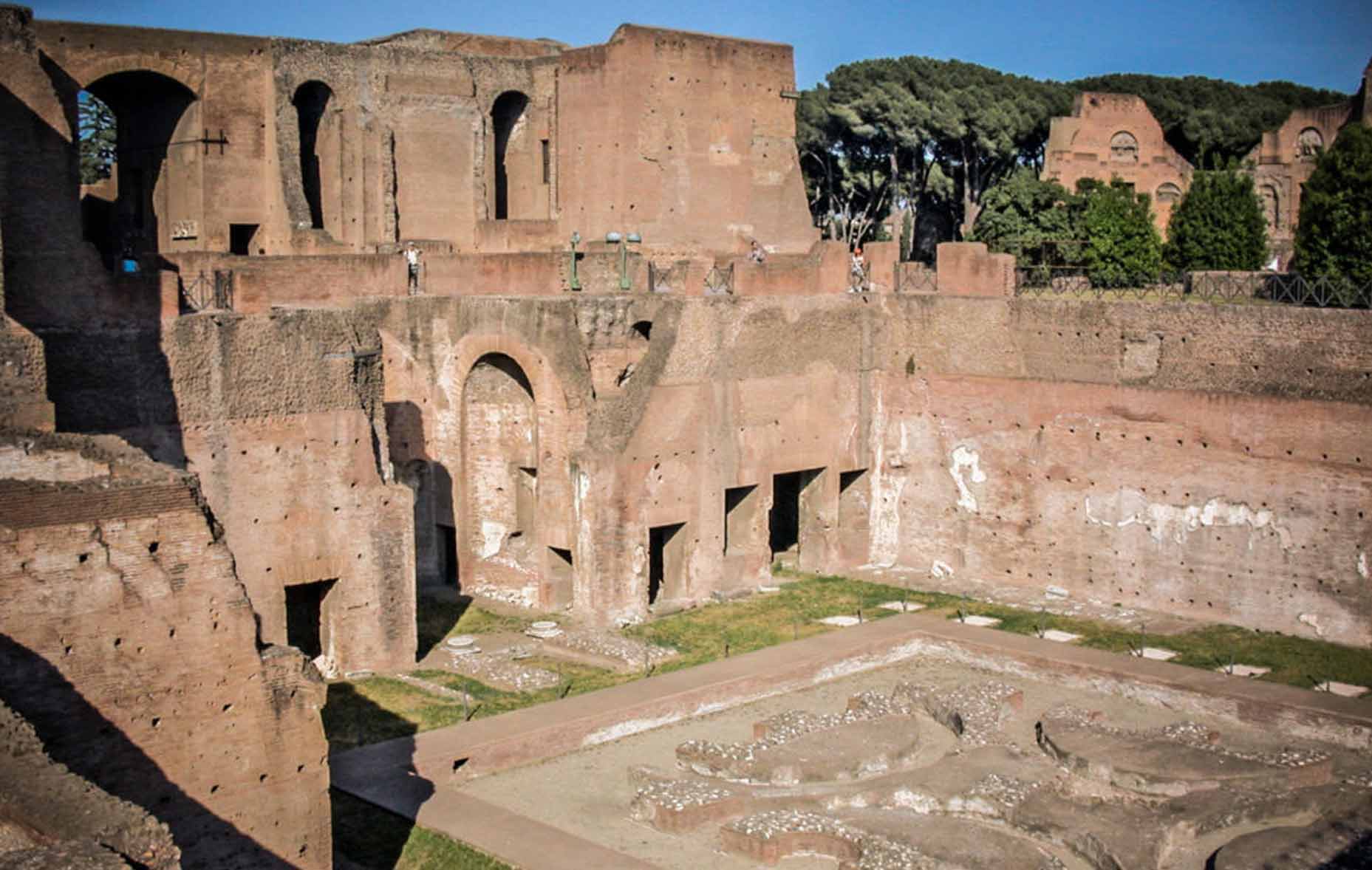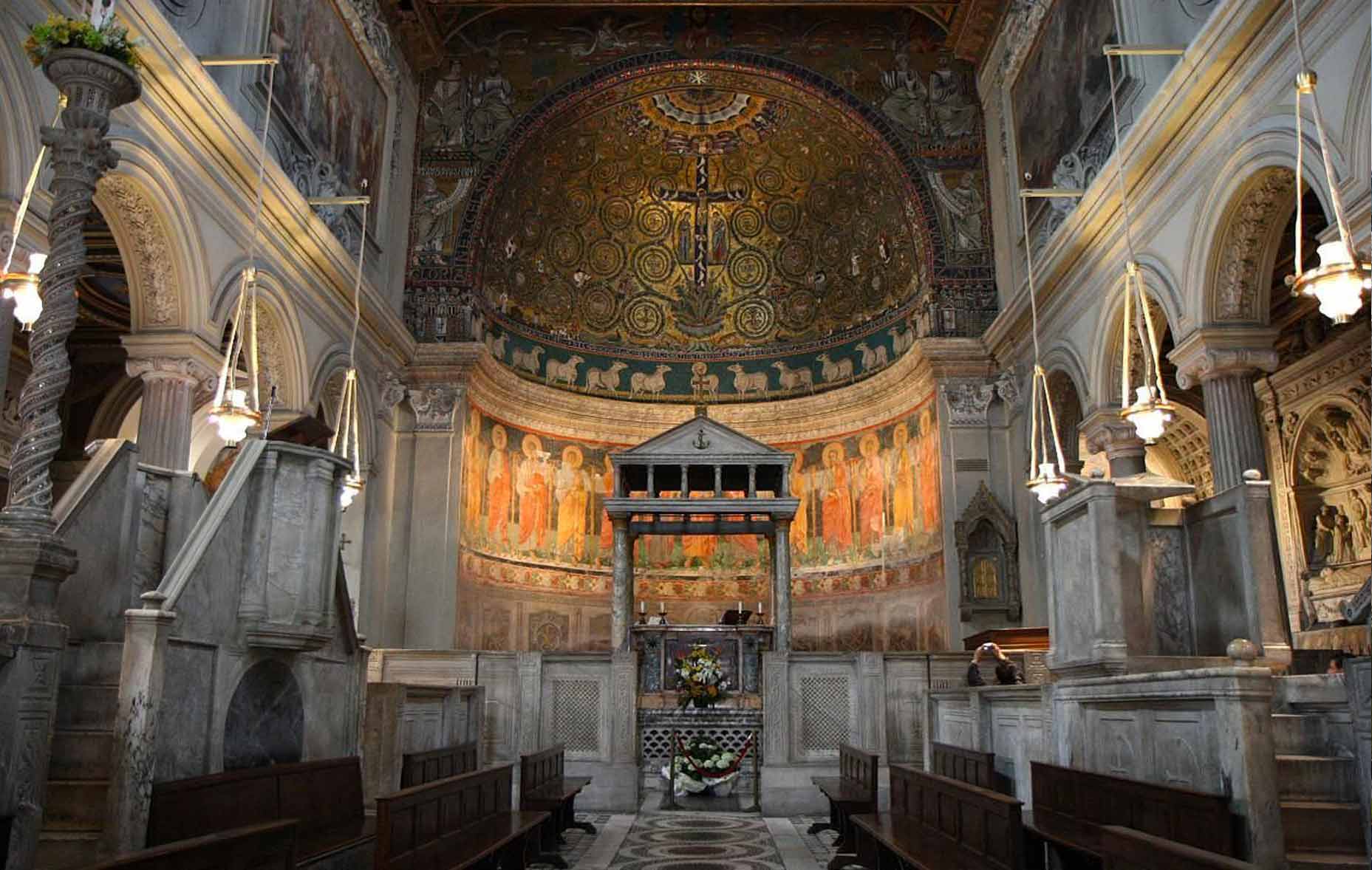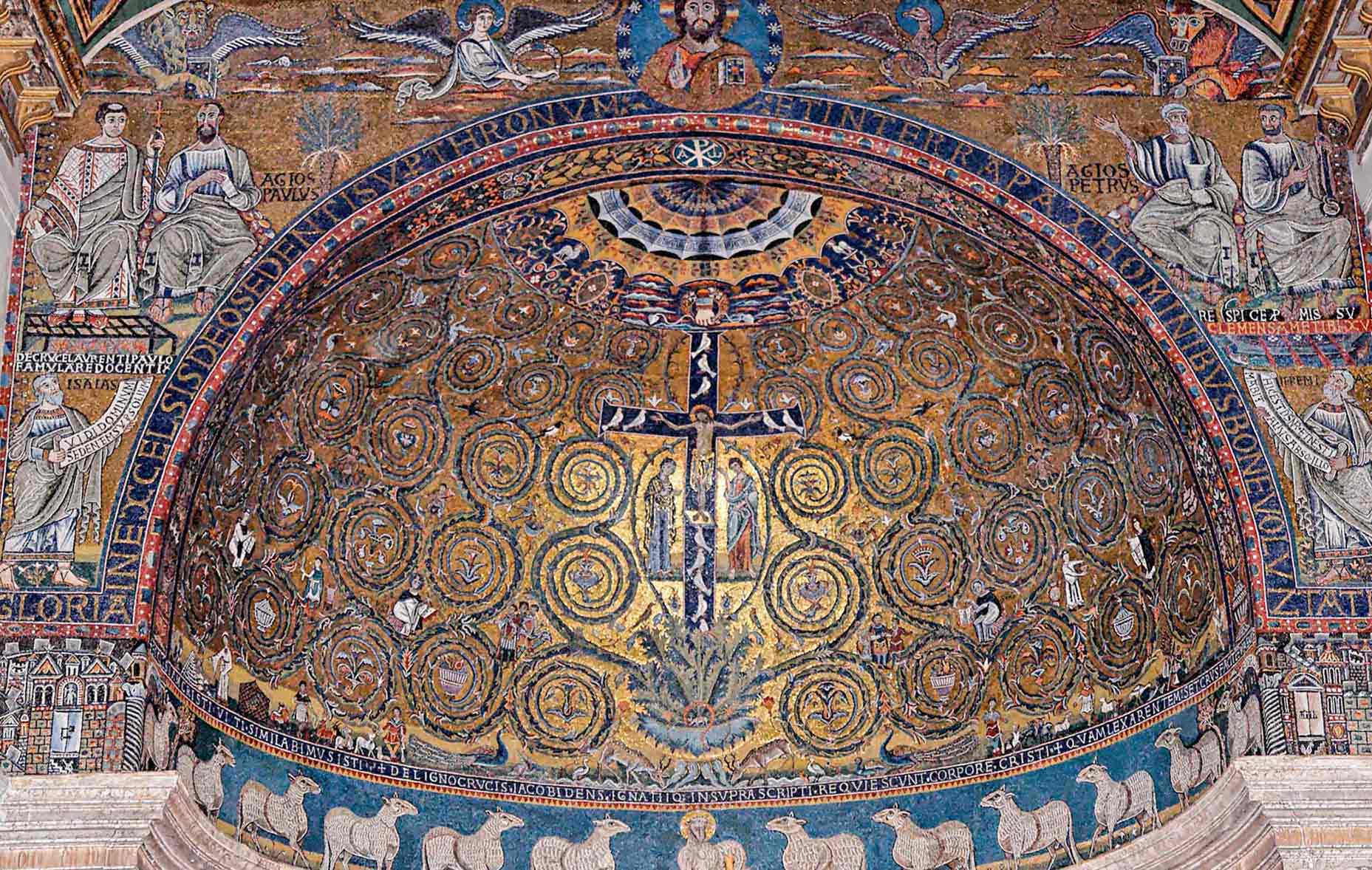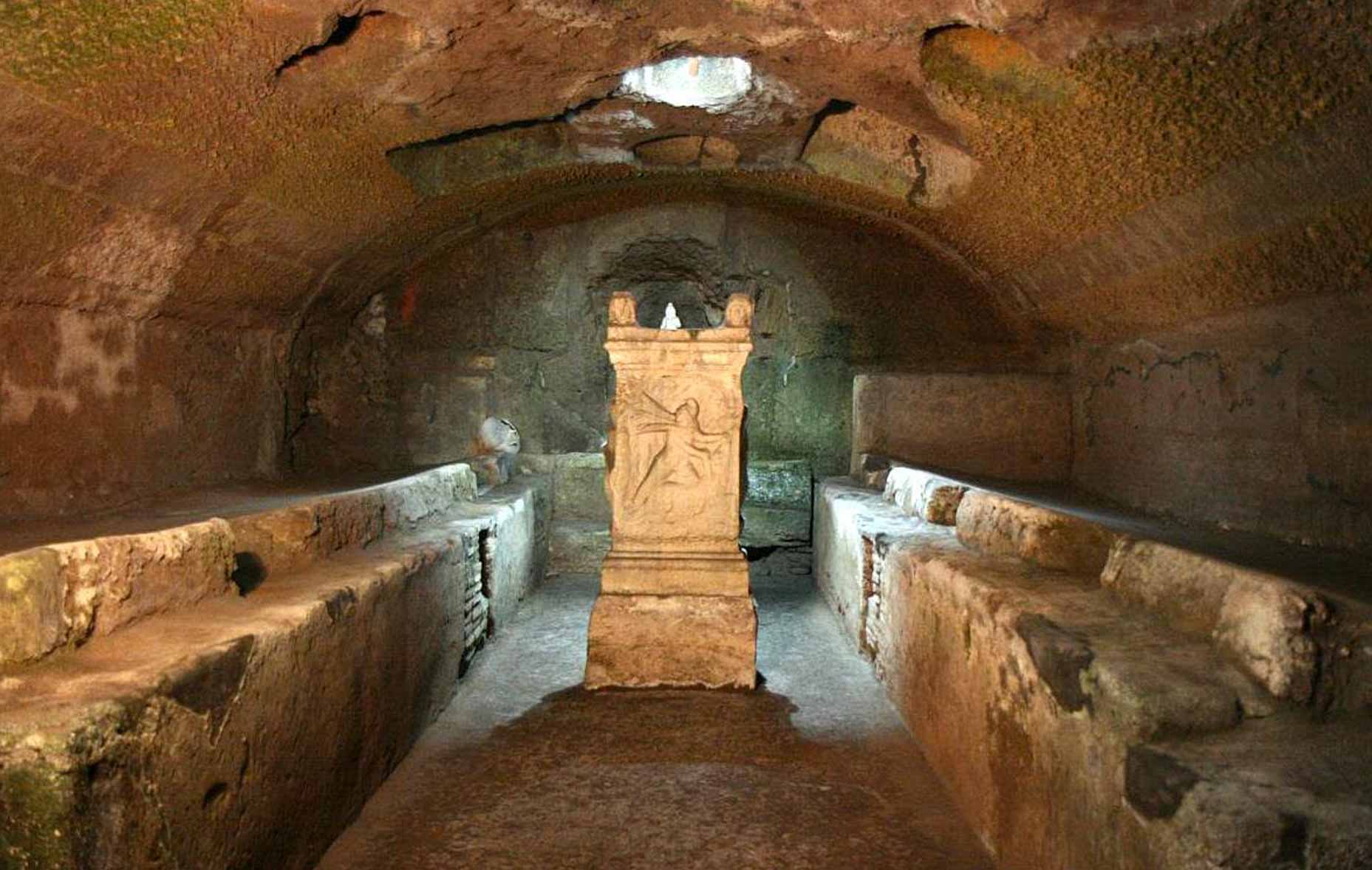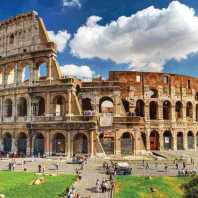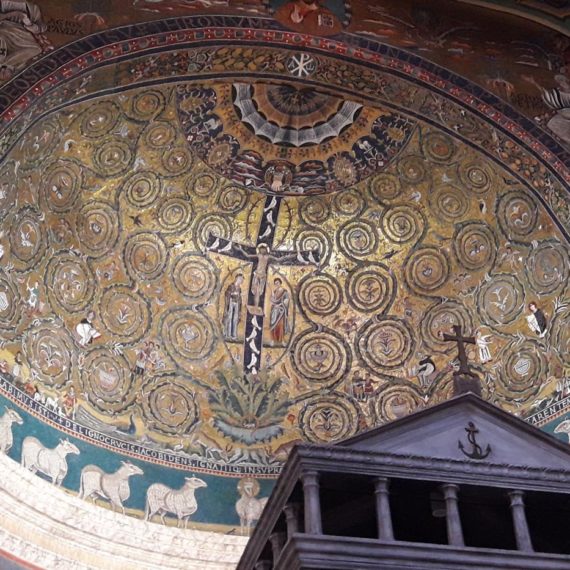Colosseum tour with the church of San Clemente
One of the things that makes Rome so unique is its stratification. We say that Rome is like lasagna or like an onion to unpeel and Rome is truly a city of layers, of many different heights and depths.
This Colosseum guided tour then combines the traditional sights visited during the standard Ancient Rome Tour – Colosseum, Palatine Hill, Roman Forum – with the medieval church of San Clemente.
There are a few places like the Church of San Clemente in Rome. Located only a stone’s throw from the Colosseum, San Clemente is a stunning piece of history, offering visitors a unique glimpse into the city’s rich past.
One of the most fascinating features of the church of San Clemente is its three levels, which reveal the many layers of history that make up this unique structure. As a matter of fact, San Clemente is one of the most stunning medieval churches in Rome with its exquisite mosaics and paintings but it hides 2 more levels underneath its magnificent marble floor. Below the “modern” 12th-century church is the original basilica, which dates back to the end of the 4th century. This church was abandoned toward the end of the 11th century.
One layer further into the earth are the remnants of a 1st-century Roman building and a temple dedicated to the god Mythras, the bull-slayer. The cult of the sun god Mithras was spread widely across the Graeco-Roman world but it’s a ‘mystery cult’, meaning only the initiates knew exactly what happened in the temple.
Ideally, (depending on your entry time for the Colosseum) the tour starts from the Roman Forum, ancient Rome’s political and religious center. Here you’ll admire ancient Rome’s grand temples and civic buildings such as the temple to the Divine Julius Ceasar and the Arch of Titus. Then, we will head to Palatine Hill, one of the most important hills in Rome. It is here that, according to tradition, Rome was founded by Romulus on April 21st, 753 BC and it’s here that emperors lived. After seeing the ruins of the imperial palace, we will visit the Colosseum where you will revive the stories of these bloody gladiator shows, exotic animals, mock sea battles, and staged animal hunts.


